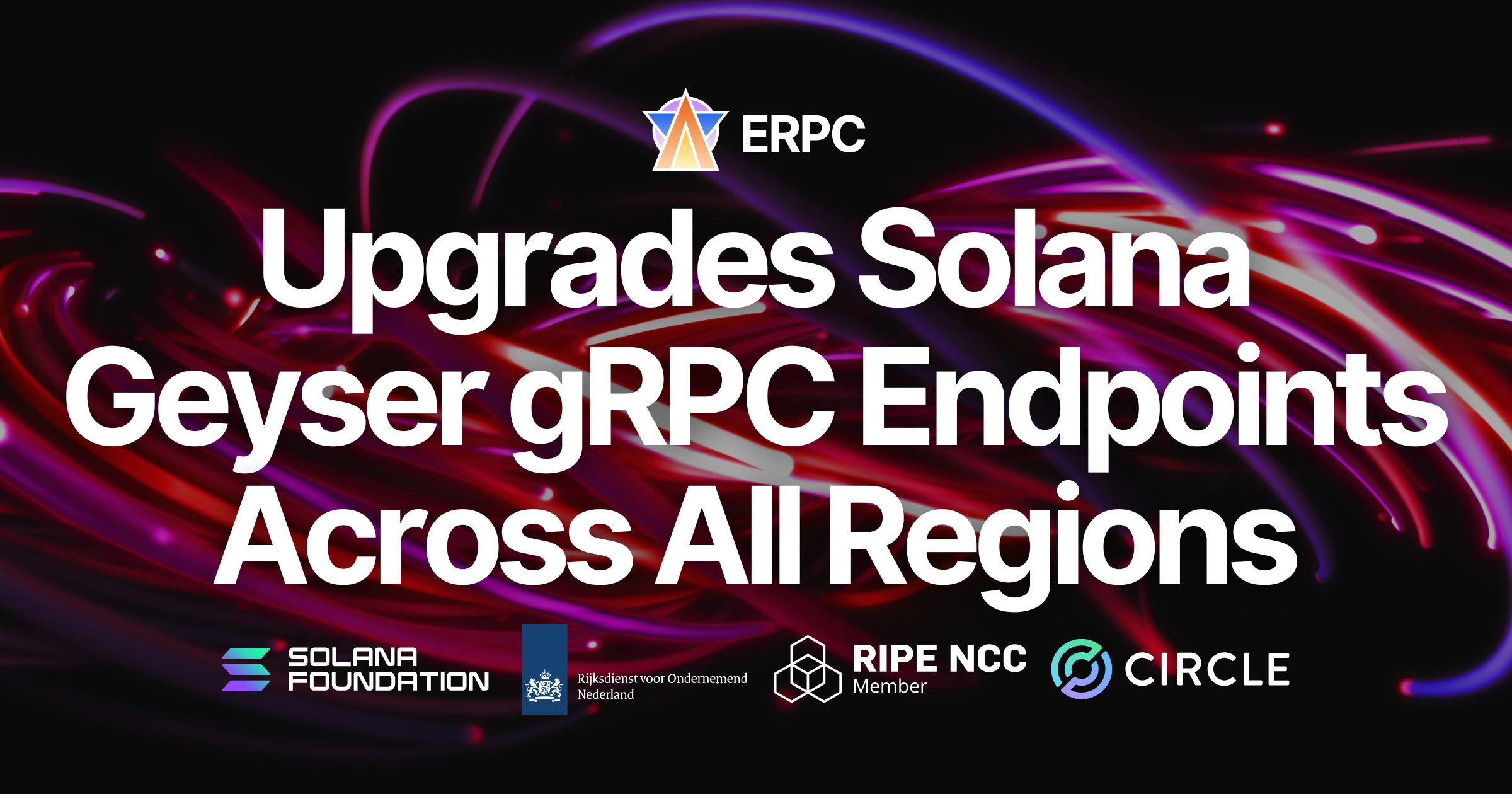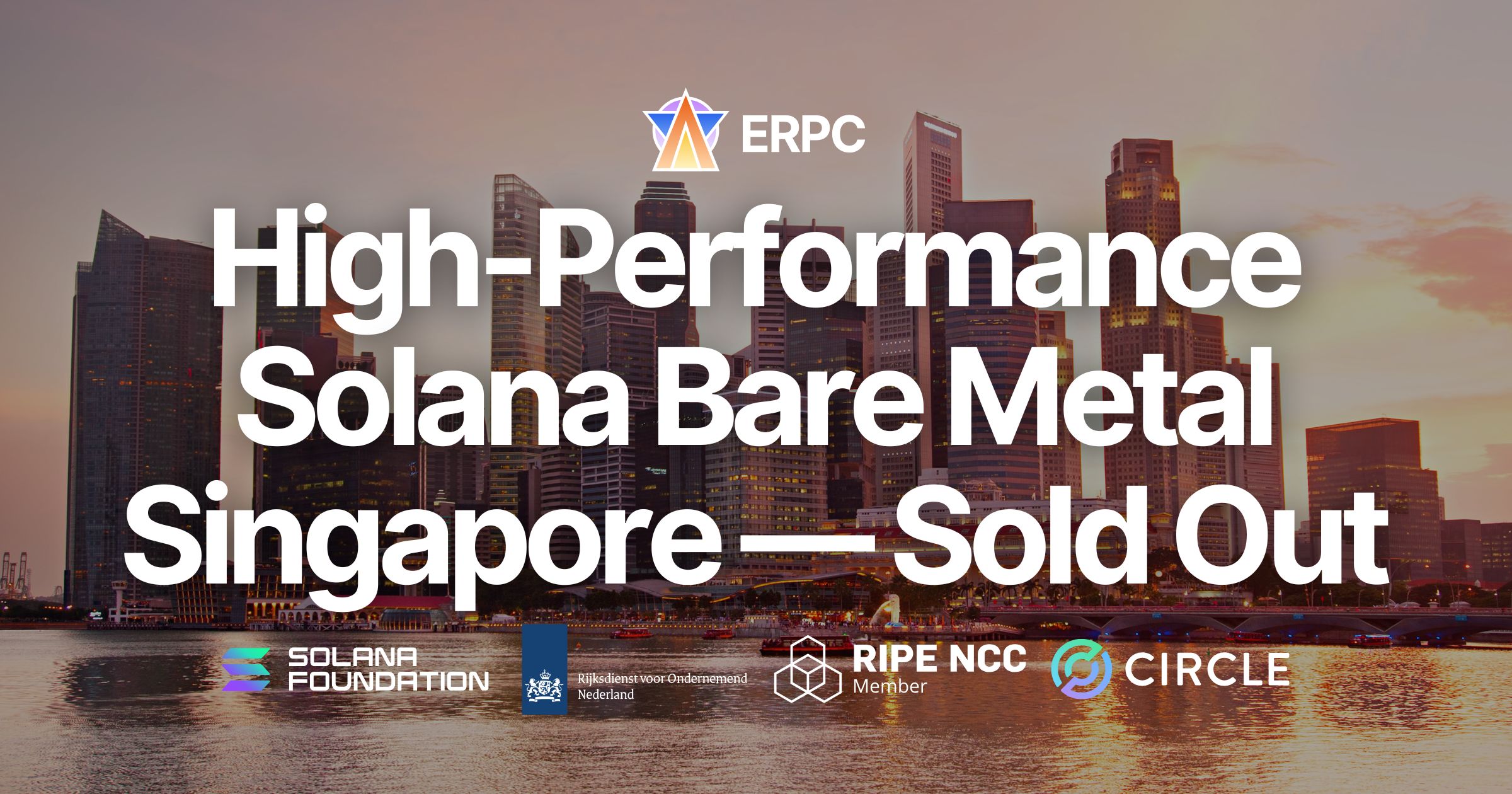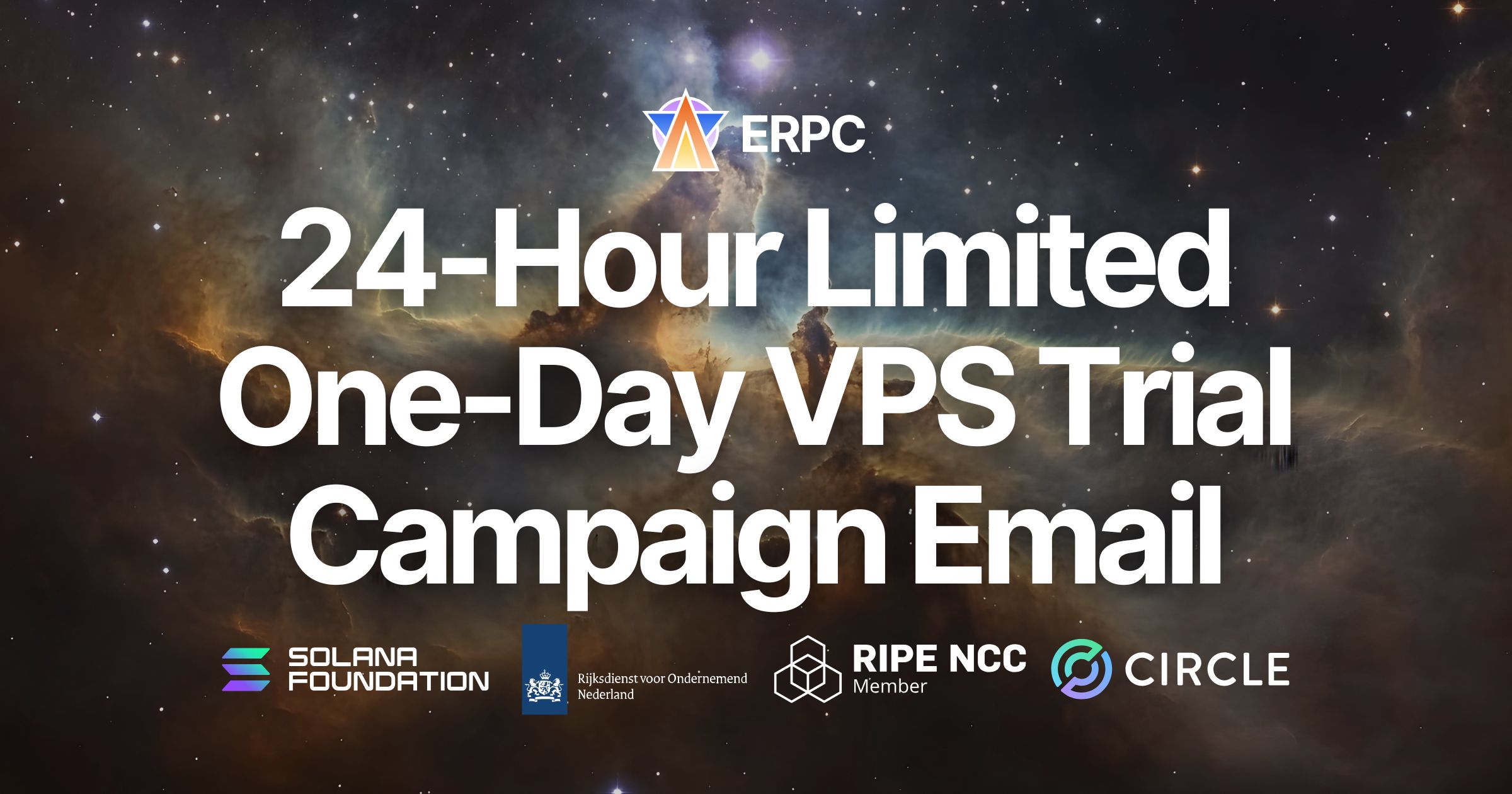ERPC Revamps Solana gRPC Dashboard with Ping-Based Visualization for Intuitive Network Performance Insights
ERPC Revamps Solana gRPC Dashboard with Ping-Based Visualization for Intuitive Network Performance Insights
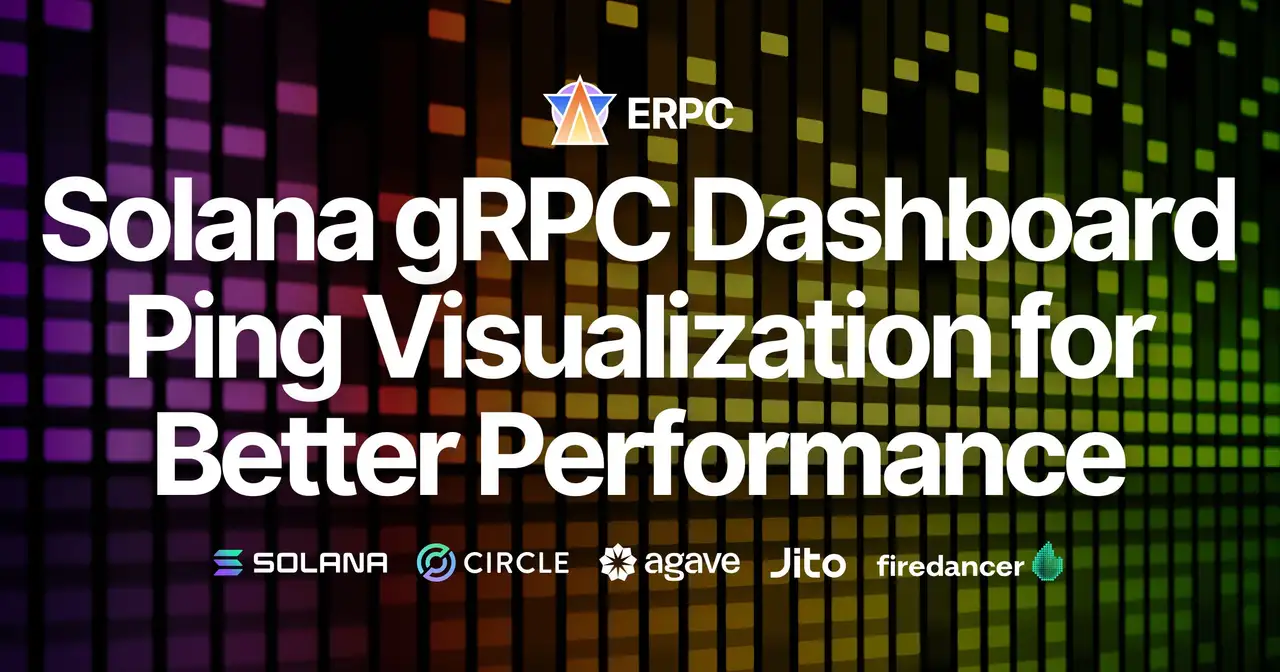
ELSOUL LABO B.V. (Headquarters: Amsterdam, Netherlands; CEO: Fumitake Kawasaki) and Validators DAO have announced a major revamp of the Solana gRPC Dashboard.
This update introduces a new ping-based visualization system, allowing users to intuitively understand the actual network performance and optimization potential of their own environments.
Following the recent introduction of ping-based automatic routing, this enhancement makes optimizing Solana network connections even easier and more transparent.
Background
Previously, ERPC displayed estimated regional connections based on the geolocation data of registered IP addresses.
However, IP-based location information often varies between providers and does not always reflect the true communication path.
However, IP-based location information often varies between providers and does not always reflect the true communication path.
For example, even a connection from Tokyo to Osaka may appear to be domestic, but in reality, the route might traverse Tokyo–Los Angeles–Osaka, causing unexpected latency.
In other words, the physical map distance and the actual network distance are not necessarily the same — and for latency-sensitive systems like blockchains, understanding real-world latency is critically important.
Overview of the New Dashboard
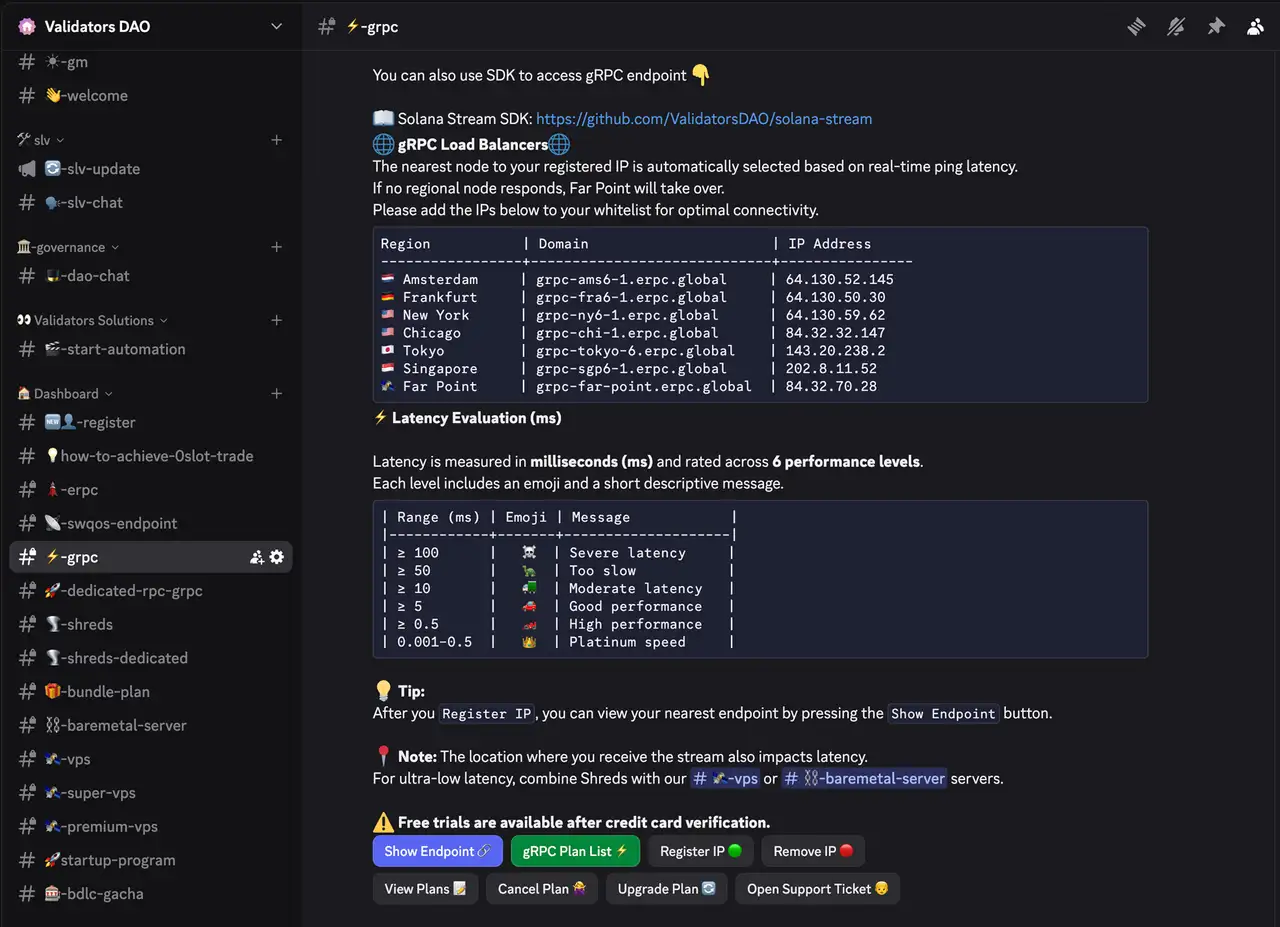
The new gRPC Dashboard visualizes network quality based on ping values using color indicators and icons for intuitive understanding.
Each registered IP address is automatically measured from all ERPC regions, and the results are displayed in real time on the dashboard.
This allows users to instantly see not only which region provides the lowest latency, but also how optimized their current setup is and whether there is room for further improvement.
For instance, a latency below 0.5 ms indicates near-optimal conditions, while a latency above 10 ms may suggest the potential to improve performance by locating a closer resource.
By visualizing this information directly, the dashboard provides clear and actionable insights for future optimization.
In addition, some configurations previously prevented ping requests from being received, causing the routing system to default to a distant region.
To address this, ERPC has published all shared endpoint IPs for whitelist registration, allowing accurate ping measurements and region selection.
These endpoints are fully protected by robust nftables rules, ensuring that only registered users can connect while all unauthorized traffic is blocked.
Technical Background and Partner Collaboration
Ping is the most accurate empirical metric for measuring actual network distance.
ERPC performs periodic ping measurements from multiple global regions to registered IPs, aggregates the results, and dynamically determines the shortest route.
ERPC performs periodic ping measurements from multiple global regions to registered IPs, aggregates the results, and dynamically determines the shortest route.
This system not only improves overall Solana network efficiency but also contributes to balanced load distribution across regions.
ERPC also utilizes DoubleZero and PNI (Private Network Interconnect) connections to achieve sub-0.2 ms communication with major Solana validators and the Jito Block Engine network.
Through collaboration with trusted datacenter partners, ERPC continues to optimize both hardware and network layers — including full CPU turbo utilization, enhanced cooling systems, and finely tuned switch configurations.
Future Value and Resource Scarcity
The high-quality network environments and proximity-optimized datacenters used by ERPC are expected to become increasingly scarce as Solana-dedicated lines (such as DoubleZero) and related infrastructure information become more widespread.
Physical near-network resources are already trending toward premium pricing as demand grows.
Now is a rare opportunity to secure high-performance resources that may soon become difficult to obtain.
Now is a rare opportunity to secure high-performance resources that may soon become difficult to obtain.
Early adoption is strongly recommended to ensure your applications can operate at maximum performance.
Solana RPC Bundle Plan

The Bundle Plan allows developers to use all three protocols — RPC, gRPC, and Shredstream — in one integrated package.
Existing RPC or gRPC users can migrate to Bundle and gain access to Shredstream at no additional cost, making it ideal for testing, benchmarking, and production deployment under unified conditions.
Developers can maintain their stable gRPC-based applications while progressively upgrading to the higher-speed Shredstream configuration.
It’s a practical, production-ready plan designed for Solana projects that demand both performance and reliability.
It’s a practical, production-ready plan designed for Solana projects that demand both performance and reliability.
For inquiries and migration support, please contact us via the official Validators DAO Discord:
- Validators DAO Discord: https://discord.gg/C7ZQSrCkYR
Premium Ryzen VPS
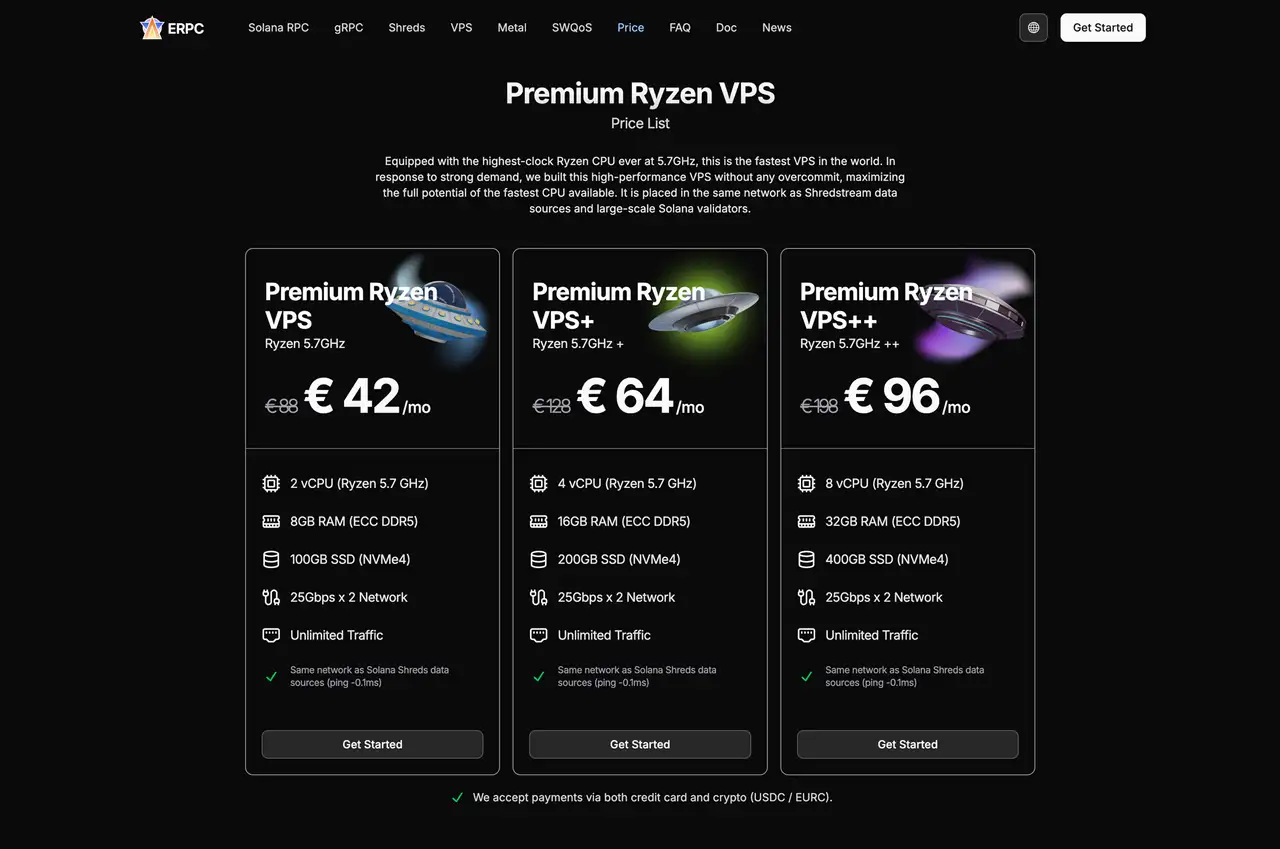
The Premium Ryzen VPS, operating within the same network as ERPC, features one of the world’s fastest 5.7 GHz high-clock CPUs, ECC DDR5 memory, NVMe4 storage, and dual 25 Gbps uplinks.
By eliminating over-commitment, it achieves bare-metal-class performance in a virtualized environment.
Co-located with Jito Shredstream sources and major Solana validators, the zero-distance network design eliminates internet-based latency.
This configuration, combining computational power and network precision, has already earned high praise from developers across the Solana ecosystem.
- Validators DAO Discord: https://discord.gg/C7ZQSrCkYR
Challenges ERPC and Validators DAO Aim to Solve
- Transaction failures and latency fluctuations in standard RPC environments
- Performance throttling by generic infrastructure providers
- The significant impact of physical network distance on data propagation
- Limited access to high-quality infrastructure for smaller projects
Through the development of Epics DAO, an open-source Solana NFT card game project, we recognized how difficult it can be to secure fast, reliable infrastructure for Solana development.
We built our own platform to solve this issue, and ERPC and SLV are the practical outcomes of that research and experience.
In finance and other mission-critical sectors, latency and instability directly affect user experience.
Because Solana’s decentralized validator and Web3 structures are complex, many projects have struggled with slow or unreliable environments.
Because Solana’s decentralized validator and Web3 structures are complex, many projects have struggled with slow or unreliable environments.
Our mission is to provide the high-performance foundation required to overcome those limitations and improve the development and user experience across the Solana ecosystem.
Both ERPC and SLV are key components of that vision.
- ERPC official website: https://erpc.global
- SLV official website: https://slv.dev
- elSOL official website: https://elsol.app
- Epics DAO official website: https://epics.dev
- Validators DAO official Discord: https://discord.gg/C7ZQSrCkYR


